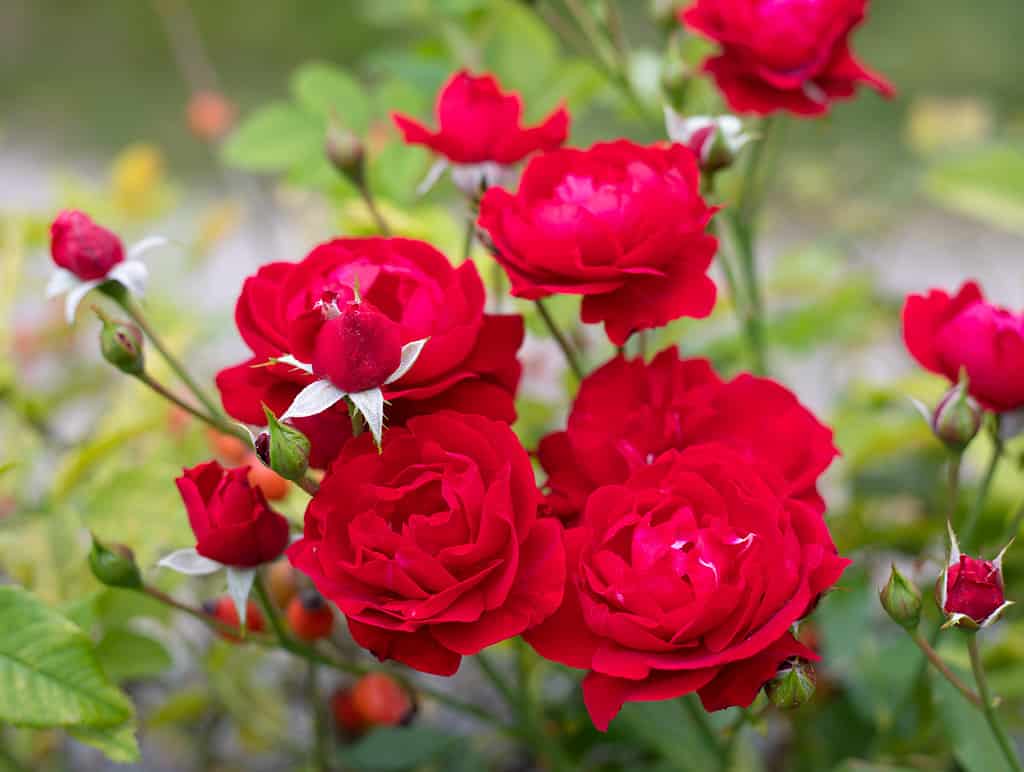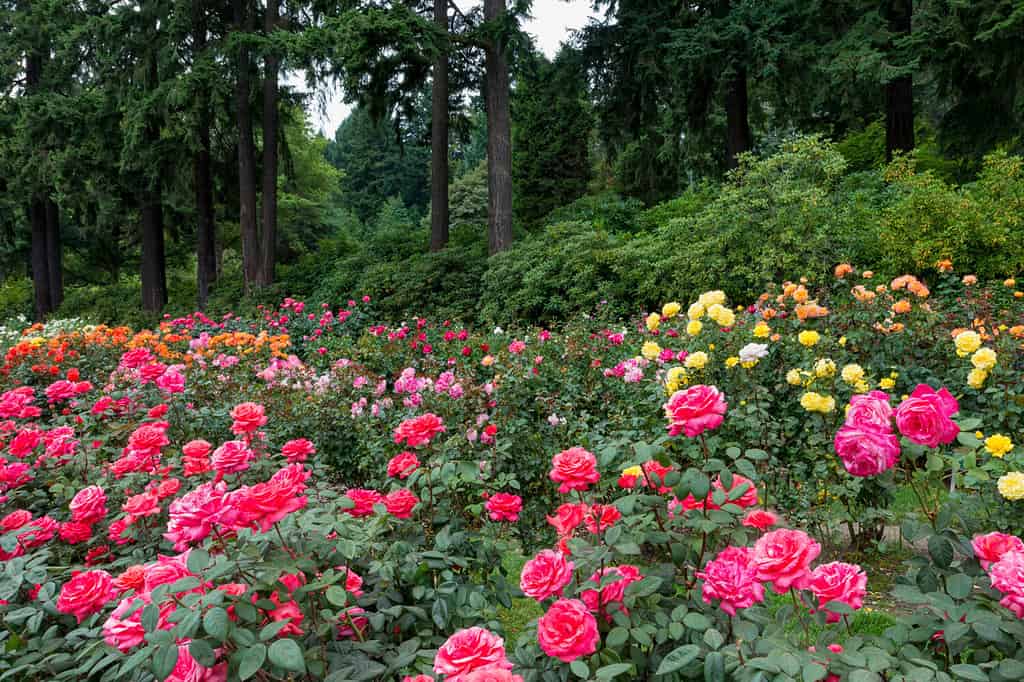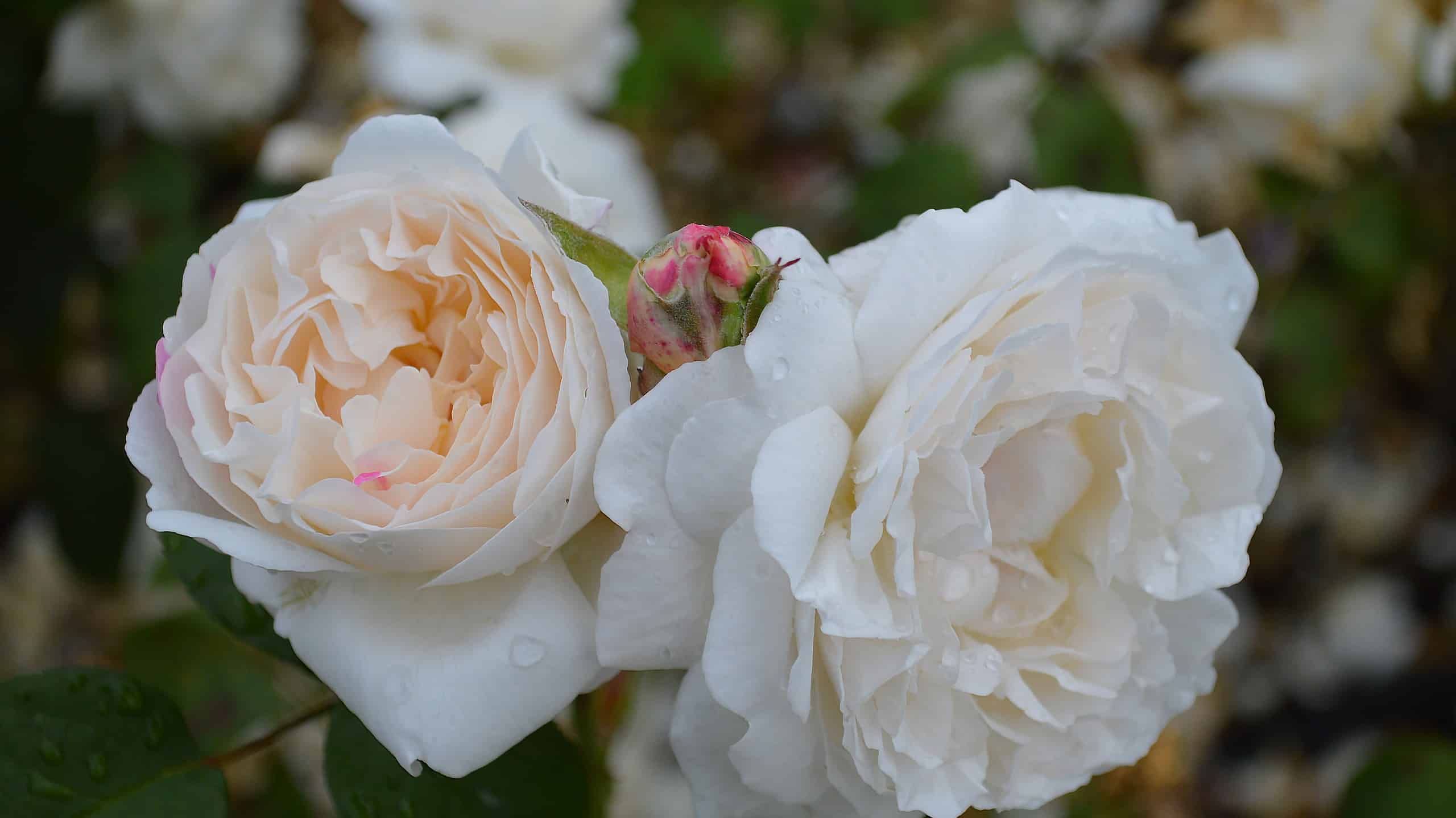Roses are beautiful flowers that add elegance and fragrance to your garden or bouquet. While they can be difficult to grow and care for, requiring specific maintenance, knowing your zone is a helpful thing to maximizing the beauty of your roses. You can use this knowledge and some basic gardening skills to maximize your roses’ peak season. With the right care, roses will also bloom more and have healthier blossoms. Unhealthy plants won’t bloom as often. Some don’t bloom at all. Fortunately, there are plenty of guides to taking the best care of your rose bushes or choosing roses that are easier to care for.
Peak Blooming Seasons

Roses play a prominent role in many events, such as Kentucky’s annual high-profile
horse
race, the Kentucky Derby, where a large rose garland is gifted to the owner of the winning horse.
©Maria Rzeszotarska/iStock via Getty Images
Most roses bloom between late spring and early fall. Generally, roses don’t bloom during that entire time. Instead, they’ll take a few weeks to develop flowers, which begin as buds and open at their peak bloom. Some varieties bloom earlier, such as climbing roses. Not only are these beautiful but they can be thorn-free, a key feature if you plan to spend time smelling the roses. Late bloomers, such as the butterfly rose peak in the fall. Many varieties bloom in the summer. You can add multiple types of roses to make sure that you enjoy blooms during the entire season.
Some varieties have a long blooming season and may even bloom more than once. Knock-out roses are famous for this, although there are other options that have repeat blooms as well. Hybrid tea roses, climbing roses, rose shrubs, and floribunda roses all bloom multiple times per season. This doesn’t mean that there are continuous blooms, however. Most roses, even the ones that bloom multiple times per season, will have a bloom cycle that includes periods where there aren’t any flowers or buds.
The first frost in your area is often the thing that puts an end to the rose season. If the rose had already formed new buds, they might be able to make it past a mild frost and still bloom. In most cases, however, frost will put an end to roses blooming. During the winter, rose plants become dormant. The plants rest and gather nutrients, which they will use to bloom and grow once it is spring again.
This is a good time to give the plant a thorough pruning. You can use shears to cut back branches that have grown out too much to reshape the plant. You should also prune any sick or damaged portions as well. To avoid spreading fungus to your roses, make sure to dip your shears in isopropyl alcohol between each cut. Rose rosette disease (RRD) results in odd growths and is a serious condition that requires you to completely dig out and remove the infected plant to prevent it from spreading to others nearby.
Factors Influencing Bloom Time

Roses come in many colors and varieties, including some that bloom multiple times within the season.
©Nagel Photography/Shutterstock.com
Modern rose varieties tend to bloom more often and be more abundant than older varieties. However, care and maintenance also play a big role in bloom time. Trimming and pruning are important for the overall health of the roses but it can also help them bloom longer and fuller. Make sure to dip your shears in alcohol between each cut to disinfect them. This removes any fungal diseases, which can wreak havoc on your roses. Black spot and powdery mildew are two of the most common that impact roses.
Pests like aphids can cause major issues that cut your rose bloom time short. Not only do they eat the flowers themselves, these and other insects damage the overall health of the plant. This means fewer and less hardy blooms in the future. Keep them away by treating your rose plants with pesticides or other natural treatments.
Some larger animals, like deer, will also make a meal out of delicate rose buds and other parts of the plant. You might need to install a fence or netting around your roses to keep hungry and curious deer out. There are also deer-repellent products that use odors to keep them from being too interested in your plants.
Knowing Your Hardiness Zone
Another factor that influences bloom time is the zone where the roses grow. These zones help identify when the first frost is expected in that area as well as when the last frost before the spring season will hit. The USDA determines hardiness zones by looking at the average minimum temperatures in each area. While these are estimates, each zone has a pretty reliable track record in most years. Of course, there are always unusual weather patterns to watch for. In these cases, you may need to take extra steps to protect your plants.
Zone 3 usually gets the shortest blooming season, typically between mid-May and mid-September. The last frost of the spring occurs around late April or early May and the first frost of the fall hits mid-September. Between those times, rose varieties can bloom and flourish. Zones 4 and 5 enjoy a slightly longer season, often between mid-May and early to mid-October. Zones 6 and 7 can enjoy roses starting in April all the way through the end of October. Zone 8 can add a few weeks to that bloom time on either side. Zone 9 has one of the longest bloom times and might even be able to enjoy some rose varieties, mostly those that bloom more than once per season, at any time of the year.
Extending Bloom Time

The right care and maintenance are important to maximize bloom time and the health of your roses.
©OlgaPonomarenko/Shutterstock.com
One important thing that you can do to extend and maximize bloom time occurs before you even plant your roses. Make sure you choose a location that gets plenty of sun and has adequate drainage. Roses need a lot of sunlight and a lack of sun is one of the biggest culprits behind rose plants that just won’t thrive. These plants are definitely not made for the shade. They also like water but not being waterlogged. Ensure that your planting location drains well, especially after heavy rains. Soaked ground can also lead to root rot or other issues with the plant.
Depending on your soil, you might need to add nutrients or even use a potting mix in place of the soil for the best results. Once your roses are planted and have established roots, they generally do well in the ground. Some gardeners swear by adding coffee grounds to the soil around roses to add nitrogen. This raises the acidity of the soil, which roses prefer. Egg shells do the same with calcium.
Deadheading is another helpful technique that extends bloom time while also keeping the plant healthy and looking great. Deadheading means removing the wilted and dead flowers and petals to make room for new blooms. You may need to use shears, dipped in alcohol between cuts, to remove them. Keep in mind that this will only result in new blooms in varieties that bloom multiple times in a season. Even in single-bloom roses, deadheading helps keep the plant looking great and in good health.
Insects and other pests can eat away at existing blooms and weaken the plant so that it doesn’t produce as much or as long. Take care of aphids and other pests with a chemical-based pesticide or a more natural option like neem oil. Coffee grounds can also keep some insects away thanks to their strong smell.
If you live in a cold climate or a zone where it is harder to grow roses, consider trying miniature roses instead of full bushes or climbing roses. Miniature roses can grow in pots. This makes it easier to bring them indoors when it is too cold, greatly extending the bloom time.
Thank you for reading! Have some feedback for us? Contact the AZ Animals editorial team.








